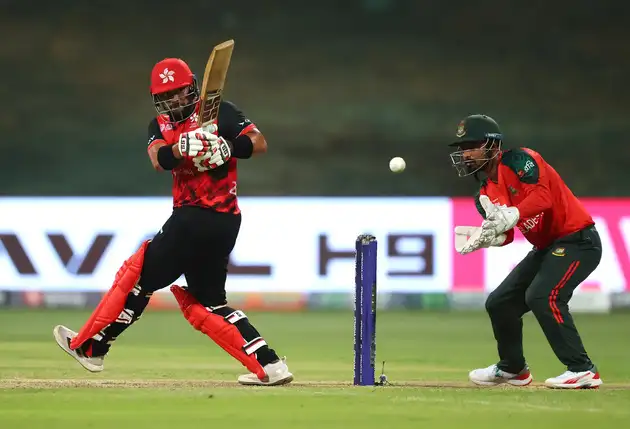
The third match of the Asia Cup 2025 saw Bangladesh take on Hong Kong at the Zayed Cricket Stadium in Abu Dhabi, and it turned out to be a clinical display of dominance from the Tigers. With a seven-wicket win, Bangladesh kicked off their campaign in style, showcasing a blend of disciplined bowling, composed batting, and strategic intent. For Hong Kong, it was a spirited effort, but one that ultimately fell short against a side brimming with experience and momentum.
Toss and Team Strategy
Bangladesh won the toss and opted to bowl first, a decision that reflected their growing confidence in chasing totals. The pitch at Abu Dhabi offered a balanced surface, with early movement for pacers and enough bounce to keep batters interested. Litton Das, leading Bangladesh for the first time in a major continental tournament, looked composed and tactical in his field placements and bowling rotations.
Hong Kong, coming off a heavy defeat to Afghanistan in their opening match, made a few changes to their lineup, hoping to stabilize their batting order and inject some aggression into their middle overs. Their captain Yasim Murtaza emphasized intent at the toss, but execution proved to be a challenge.
Hong Kong’s Innings: A Promising Start, Faltering Finish
Batting first, Hong Kong posted 143 for 7 in their allotted 20 overs. The innings began with promise, as Nizakat Khan anchored the top order with a well-crafted 42 off 36 balls. His strokeplay was elegant, mixing sweeps and lofted drives with smart rotation of strike. Anshuman Rath and Babar Hayat chipped in with brief cameos, but Bangladesh’s bowlers never allowed partnerships to flourish.
Taskin Ahmed and Shoriful Islam were the pick of the bowlers, each claiming two wickets and maintaining tight lines. Taskin’s early breakthroughs disrupted Hong Kong’s rhythm, while Shoriful’s variations in pace kept the middle order guessing. Mahedi Hasan and Tanzim Sakib provided support with economical spells, ensuring that Hong Kong couldn’t accelerate in the death overs.
Despite a decent platform at 90 for 3 in the 13th over, Hong Kong lost momentum. Their lower order struggled to find boundaries, and Bangladesh’s fielding was sharp, cutting off singles and applying pressure. The final overs yielded just 53 runs, leaving Hong Kong with a below-par total against a side known for its chasing prowess.
Bangladesh’s Chase: Calm, Calculated, and Commanding
In response, Bangladesh chased down the target in 17.4 overs, finishing at 144 for 3. The innings was anchored by Litton Das, who scored a fluent 59 off 39 balls and was later named Player of the Match. His knock was a masterclass in controlled aggression—punishing loose deliveries while respecting the good ones. Litton’s timing and placement were impeccable, and his ability to rotate strike kept the scoreboard ticking.
Towhid Hridoy played the perfect foil, remaining unbeaten on 35 off 28 balls. His innings was marked by maturity and calmness, especially in the middle overs when Hong Kong tried to claw back with spin. Together, Litton and Hridoy stitched a crucial partnership that effectively sealed the game.
Earlier, openers Tanzid Hasan and Parvez Hossain provided a brisk start, scoring 24 and 23 respectively. Their intent was clear—attack the new ball and set the tone. Though both fell in quick succession, the foundation was strong enough for the middle order to build upon.
Hong Kong’s bowlers, led by Ayush Shukla and Ehsan Khan, tried to apply pressure with slower deliveries and tight lines, but Bangladesh’s batters were too composed. The chase was never in doubt, and the finishing touches by Hridoy ensured there were no late hiccups.
Tactical Brilliance and Team Balance
One of the standout aspects of Bangladesh’s performance was their tactical clarity. Choosing to bowl first allowed their pacers to exploit early movement, and the batting order was structured to absorb pressure and accelerate when needed. Litton Das’s captaincy was proactive—field placements were sharp, bowling changes timely, and the overall energy on the field reflected a team that knew its strengths.
The team’s balance was evident. With a mix of youth and experience, Bangladesh looked well-prepared for the challenges ahead. Mustafizur Rahman’s variations, Mahedi Hasan’s control, and the emergence of Tanzim Sakib as a reliable new-ball option give the bowling attack depth. In the batting department, the top order is aggressive, the middle order stable, and the lower order capable of finishing games.
Hong Kong’s Takeaways
Despite the loss, Hong Kong showed glimpses of potential. Nizakat Khan’s innings was a reminder of the talent in their ranks, and their bowlers did well to stretch the game into the 18th over. However, the lack of firepower in the death overs and the inability to build partnerships remain concerns.
Their campaign now hinges on regrouping quickly and finding consistency. With matches against Afghanistan and Sri Lanka still to come, Hong Kong will need to sharpen their execution and play fearless cricket to stay in contention.
Bangladesh’s Momentum and Outlook
For Bangladesh, this win is more than just two points—it’s a statement. After years of near-misses in the Asia Cup, the team looks determined to rewrite its narrative. With three consecutive series wins leading into the tournament and a fresh approach to batting aggression, the Tigers are no longer playing catch-up—they’re setting the pace.
Litton Das’s leadership, combined with the form of players like Hridoy, Taskin, and Shoriful, gives Bangladesh a strong foundation. Their next matches against Sri Lanka and Afghanistan will be tougher tests, but if they maintain this level of discipline and flair, a semifinal berth looks well within reach.
Final Thoughts
The Bangladesh vs Hong Kong clash in the Asia Cup 2025 was a showcase of intent, execution, and rising confidence. Bangladesh ticked all the boxes—bowling discipline, batting composure, and fielding sharpness—while Hong Kong showed heart but lacked finishing power.
As the tournament progresses, this match will be remembered as the moment Bangladesh announced their arrival with authority. For fans, it was a satisfying watch; for rivals, a warning. The Tigers are roaring, and they’re not here to participate—they’re here to contend.


Leave a Reply